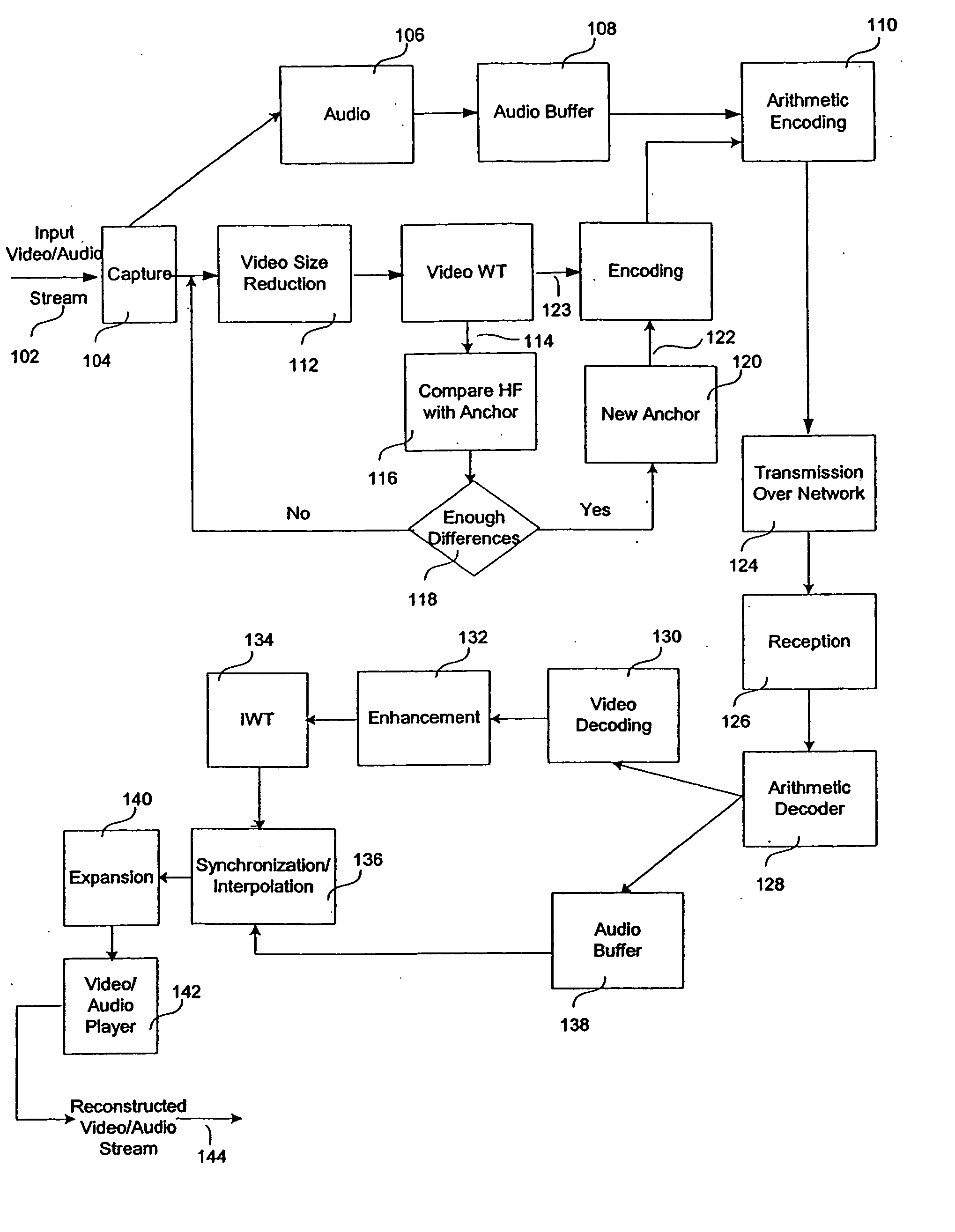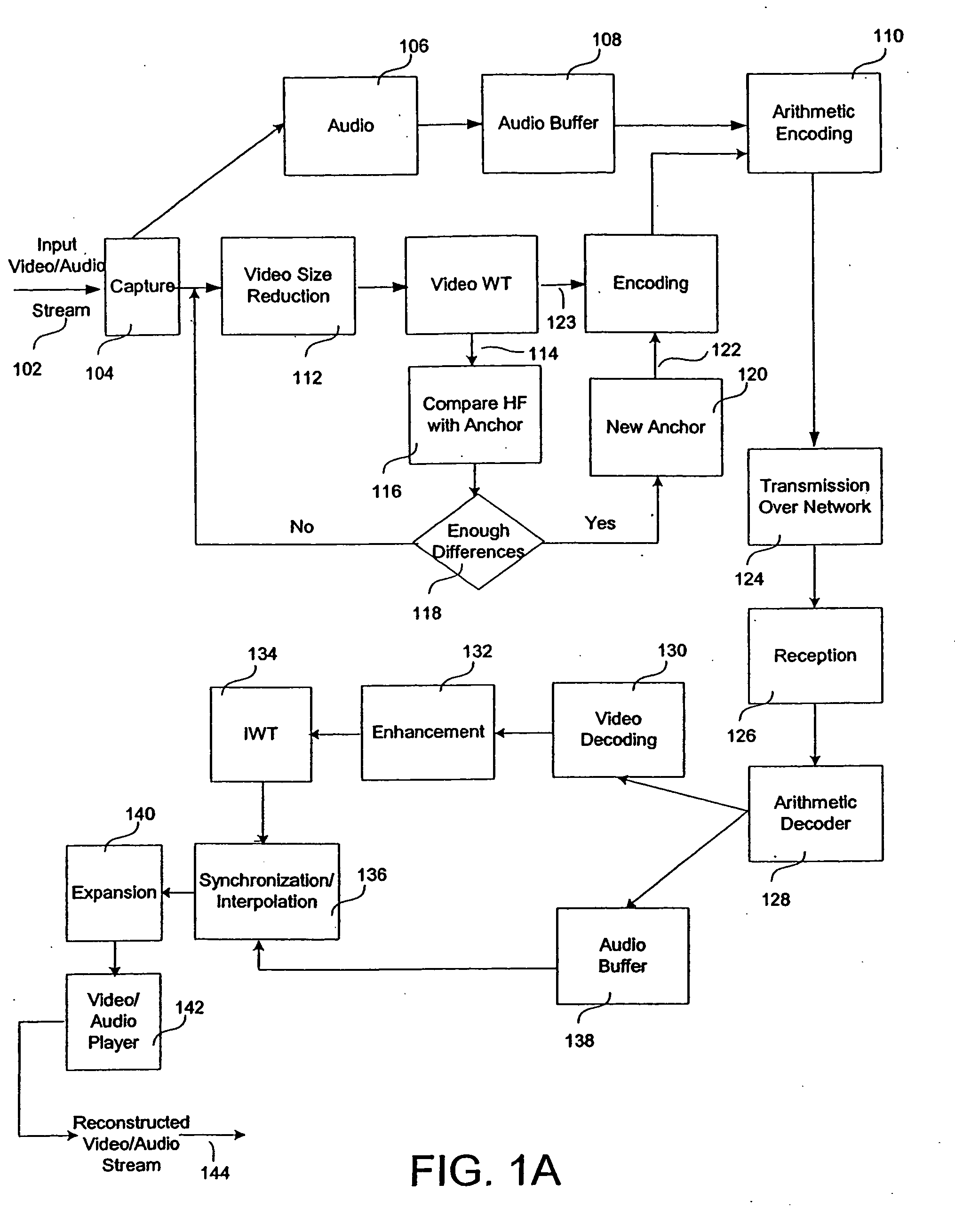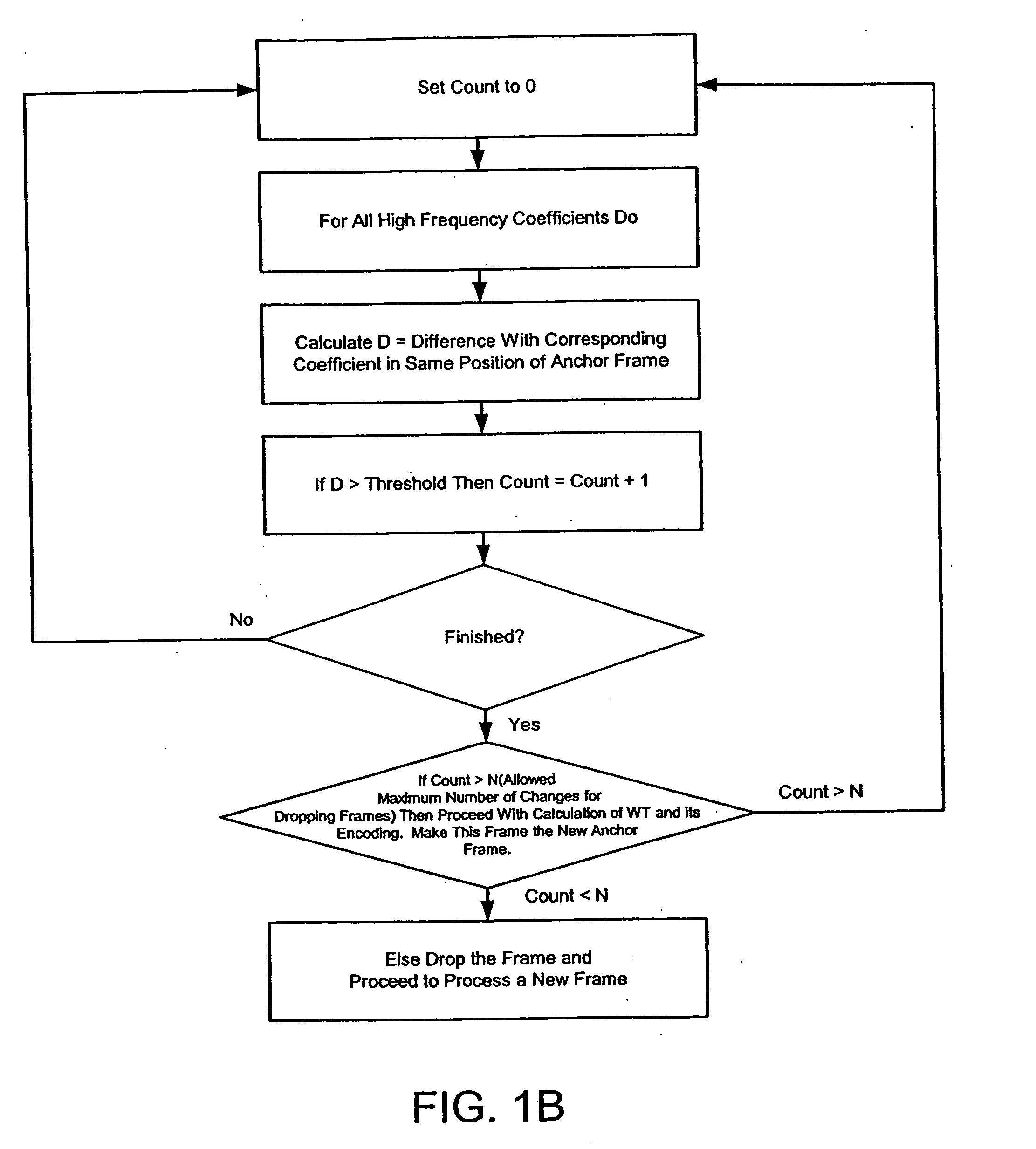Real-time software video/audio transmission and display with content protection against camcorder piracy
a technology of content protection and software video/audio transmission, applied in the field of software programs for compressing, transmitting, decompressing and displaying video and audio information, can solve the problems of limited market demand, inability to deliver quality video in real-time at a reasonable cost over the internet, and inability to meet the needs of cable tv quality, etc., to achieve rapid compression
- Summary
- Abstract
- Description
- Claims
- Application Information
AI Technical Summary
Benefits of technology
Problems solved by technology
Method used
Image
Examples
Embodiment Construction
I. General Description of the Invention
[0040] To achieve the goals stated above, and as described in U.S. application Ser. No. 10 / 374,824 (incorporated herein fully by reference), the present invention discloses that a decimated wavelet transform (WT) can advantageously be used. Decimation can result in a number of low frequency coefficients which is one half of the number of original values to be encoded and an equal number of high frequency coefficients for a total equal to the original number of values. Without decimation, as in some prior art methods, the WT results in a number of high and low frequency coefficients which is double the original number of values. However, according to the present invention, the decimated WT can be used for compression by discarding some, or all, as is certain embodiments of the invention, of the high frequency coefficients. As is another teaching of the present invention, the decimated WT can also be a basis for expansion, because a given signal ...
PUM
 Login to View More
Login to View More Abstract
Description
Claims
Application Information
 Login to View More
Login to View More - R&D
- Intellectual Property
- Life Sciences
- Materials
- Tech Scout
- Unparalleled Data Quality
- Higher Quality Content
- 60% Fewer Hallucinations
Browse by: Latest US Patents, China's latest patents, Technical Efficacy Thesaurus, Application Domain, Technology Topic, Popular Technical Reports.
© 2025 PatSnap. All rights reserved.Legal|Privacy policy|Modern Slavery Act Transparency Statement|Sitemap|About US| Contact US: help@patsnap.com



